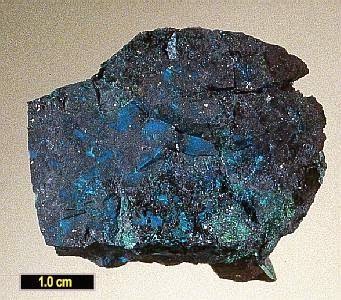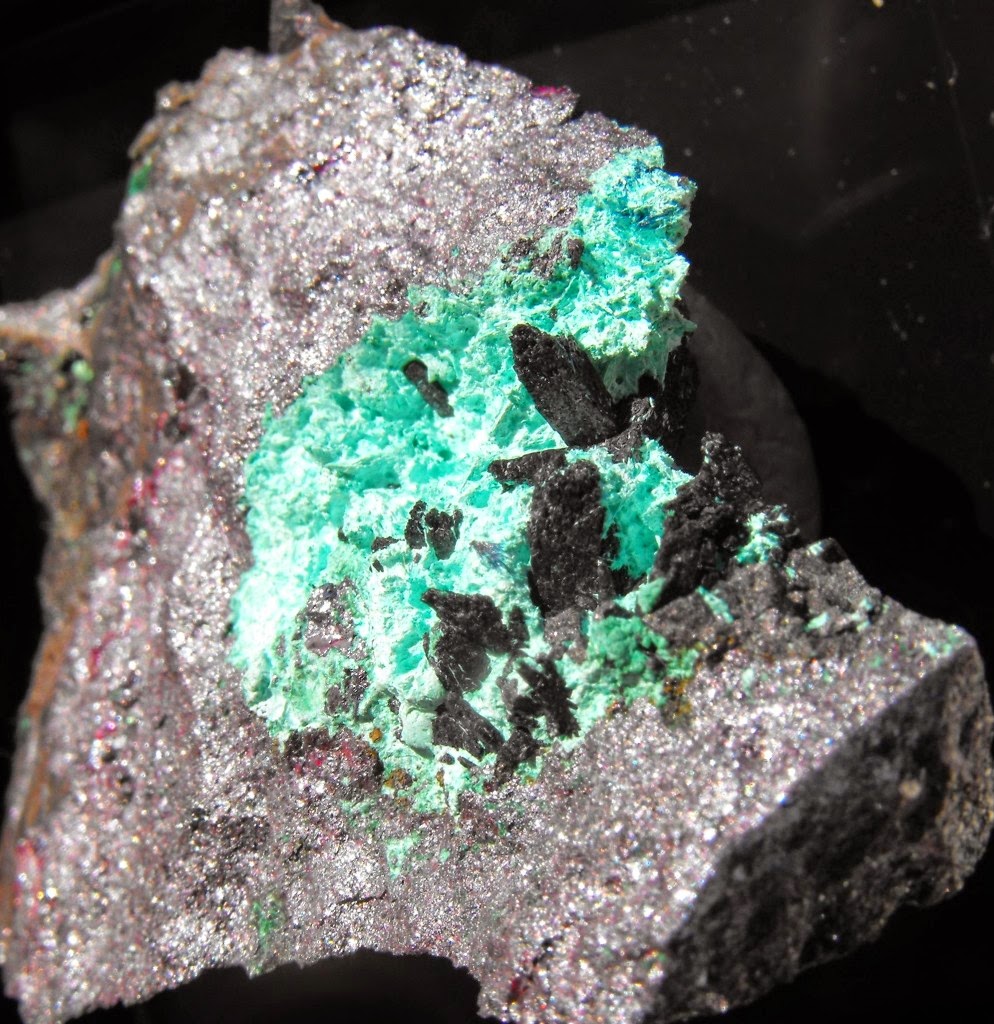
Chemical Formula: Cu2Cu2O3
Locality: Copper Queen mine, Bisbee, Arizona, USA.
Name Origin: Named from the Greek for near and melaconite, which in turn was named for black and dust, now a synonym for tenorite.
Paramelaconite is a rare, black-colored copper oxide mineral with formula Cu21+Cu22+O3 (or Cu4O3). It was discovered in the Copper Queen Mine in Bisbee, Arizona, about 1890. It was described in 1892 and more fully in 1941. Its name is derived from the Greek word for “near” and the similar mineral melaconite, now known as tenorite.
Description and occurrence
Paramelaconite is black to black with a slight purple tint in color, and is white with a pinkish brown tint in reflected light. The mineral occurs with massive habit or as crystals up to 7.5 centimetres (3.0 in). A yellow color is formed when the mineral is dissolved in hydrochloric acid, a blue color when dissolved in nitric acid, and a slightly brown precipitate when exposed to ammonium hydroxide. When heated, paramelaconite breaks down into a mixture of tenorite and cuprite.
Paramelaconite is a very rare mineral; many specimens purported as such are in fact mixtures of cuprite and tenorite. Paramelaconite forms as a secondary mineral in hydrothermal deposits of copper. It occurs in association with atacamite, chrysocolla, connellite, cuprite, dioptase, goethite, malachite, plancheite, and tenorite. The mineral has been found in Cyprus, the United Kingdom, and the United States.
History
Discovery date: 1891
Town of Origin: MINE COPPER QUEEN, BISBEE, COCHISE CO., ARIZONA
Country of Origin: USA
Optical properties
Optical and misc. Properties : Opaque
Physical properties
Hardness: 4,50
Density: from 6,10 to 6,11
Color : black; purplish black
Luster : adamantine; bright
Streak: brownish black
Break: conchoidal
Cleavage: NO
Photos:











